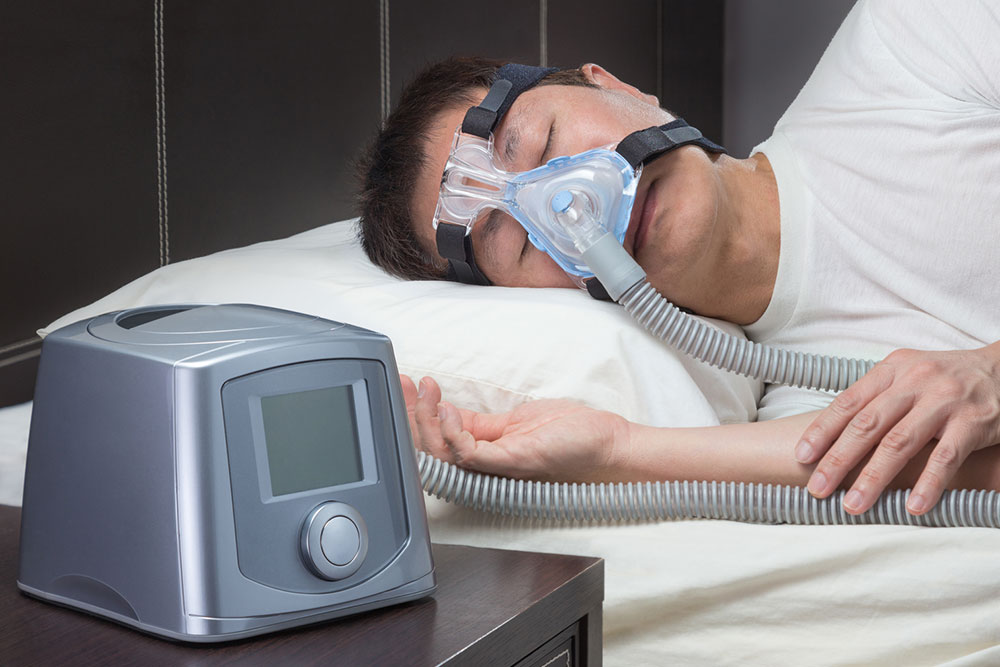6 things to know about sleep apnea
A very serious sleep disorder, sleep apnea occurs due to irregular breathing during sleep. Often characterized by frequent interruptions in breathing during a sleep cycle, sleep apnea is a far more common sleep disorder than you think. Nearly 18 million citizens may have a case of sleep apnea. About two to four percent of the citizens may have an undiagnosed case of sleep apnea. The disorder can be life-threatening if it’s not diagnosed as soon as possible.

What causes sleep apnea?
There are three types of sleep apnea—central sleep apnea, obstructive sleep apnea, and complex sleep apnea syndrome. Obstructive sleep apnea occurs due to the relaxation of the muscles in the back of the throat. This causes the airway to close during breathing. This causes a lack of air and oxygen level in the blood and interrupts sleep since the person is unable to breathe.
Central sleep apnea is a less common type caused by the brain’s failure to transmit signals to the breathing muscles. For a short period, there are no efforts taken to breathe leading to shortness of breath and interruptions in the sleep cycle. Complex sleep apnea syndrome happens when a person has both types of sleep apnea.
The risk for sleep apnea increases for those with excess weight, thicker neck circumference, narrow throat due to tonsils or adenoids, a habit of smoking, heart disorders, and nasal congestion. The disorder can be inherited as well.
What are the common symptoms of sleep apnea?
The symptoms and signs of all types of sleep apnea may overlap. The symptoms may be experienced in the daytime or nighttime. Some of the common nighttime symptoms include loud persistent snoring, pauses in breathing, choking or gasping for air during sleep, restless sleep, and frequent visits to the bathroom. Daytime symptoms include excessive daytime fatigue, early morning headaches, depression or irritability, poor concentration, and sleepiness during routine activities.
What are the popular treatment options?
Mild forms of sleep apnea may be treated with a few changes in the lifestyle. Doctors usually recommend patients to actively lose excess weight, refrain from consuming alcohol and sleeping pills, and change sleep positions for better breathing.
For serious cases of sleep apnea, a treatment known as continuous positive airway pressure or CPAP is recommended. Dental devices are also sometimes used to treat sleep apnea. In certain cases, surgery is also recommended; this can include nasal surgery, uvulopalatopharyngoplasty, and mandibular maxillomandibular advancement surgery or MMA.
What is a CPAP machine?
A CPAP machine is a tiny box with a motorized fan inside. The fan draws in air from the surroundings and pressurizes it. A humidification chamber in the box humidifies the pressurized air. The pressurized and humidified air is then delivered through a mask attached to the CPAP machine through a hose. A person with sleep apnea has to wear the mask over their mouth and /or nose when they sleep. The air delivered through the machine keeps the airways open so that breathing is regulated without any interruptions.
What is the diet for sleep apnea patients?
The best way to manage sleep apnea is by maintaining healthy body weight. This can be done by modifying the diet. Additionally, there are certain foods that can alleviate sleep apnea symptoms. These include low-fat dairy products rich in calcium, protein, and vitamin D. Also, whole grains and plant-based oils can be a useful addition to the diet. Eating strawberries, pears, apples, citrus fruits, cabbage, brussels sprouts, and artichokes can help in better management of the disorder.
However, eating bananas must be avoided, at least in the afternoon and night as bananas cause increased production of mucus in the respiratory system. Additionally, it is best to refrain from eating foods that are rich in saturated fats.
Are there any exercises?
Some physicians may recommend certain oral exercises to help in the treatment of sleep apnea as well as snoring. These exercises involve the tongue and help to strengthen the muscles in the jaw. One of the simplest exercises is to push the tip of the tongue against the roof of the mouth and slide the tongue backward. Another exercise involves pushing the tongue upwards so that the entire tongue lies against the roof of the mouth; this must be done 20 times.




